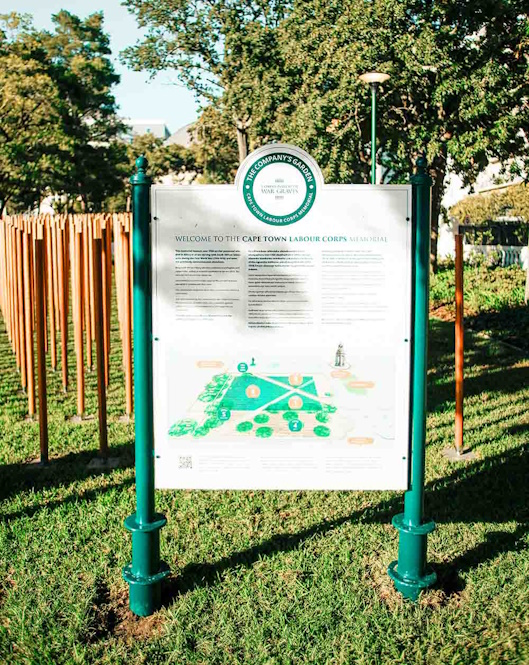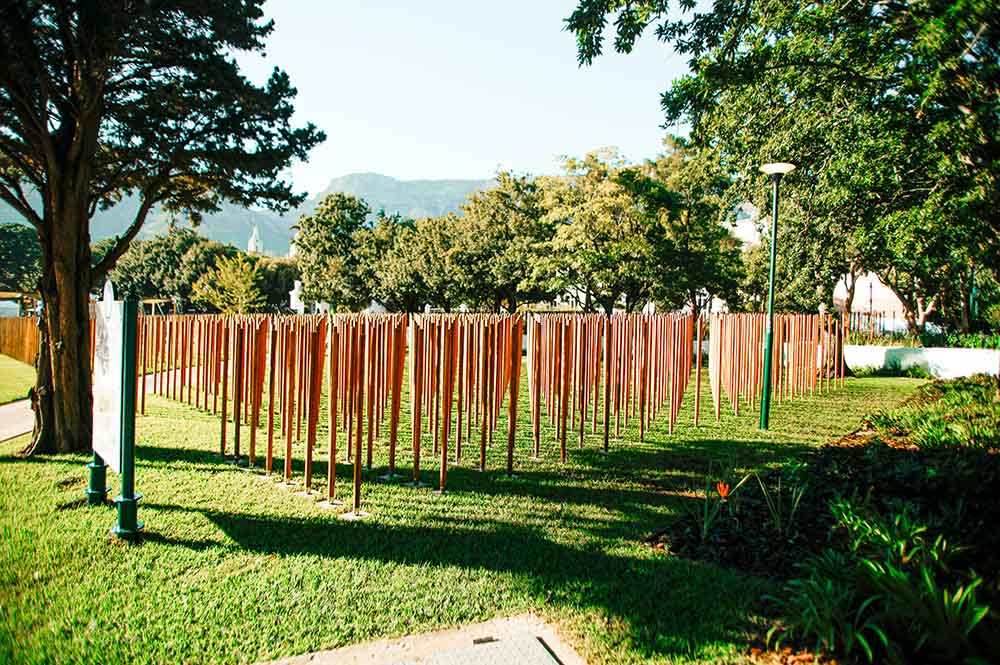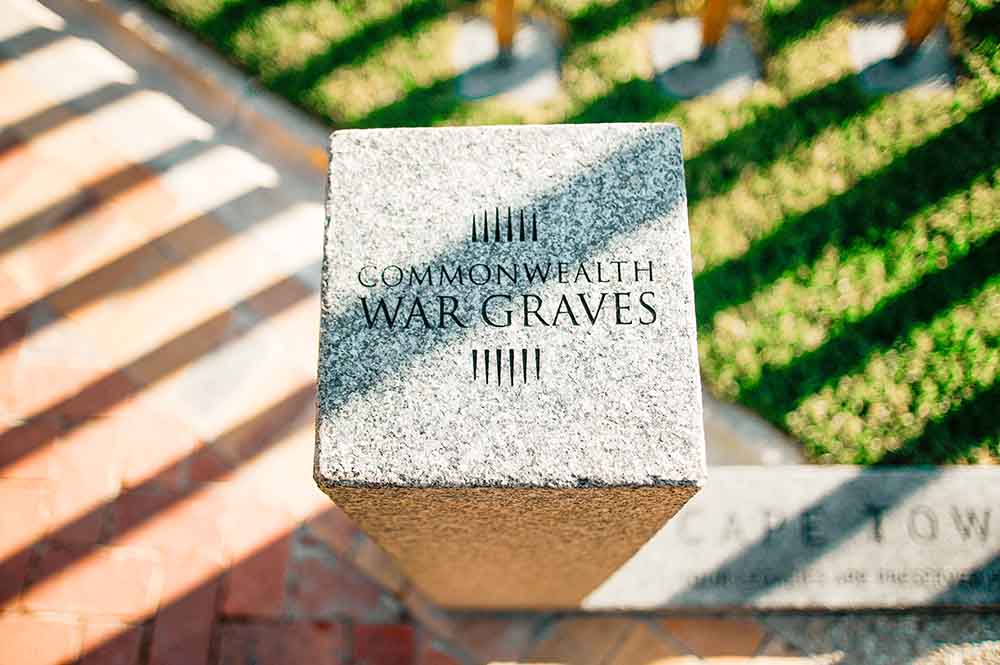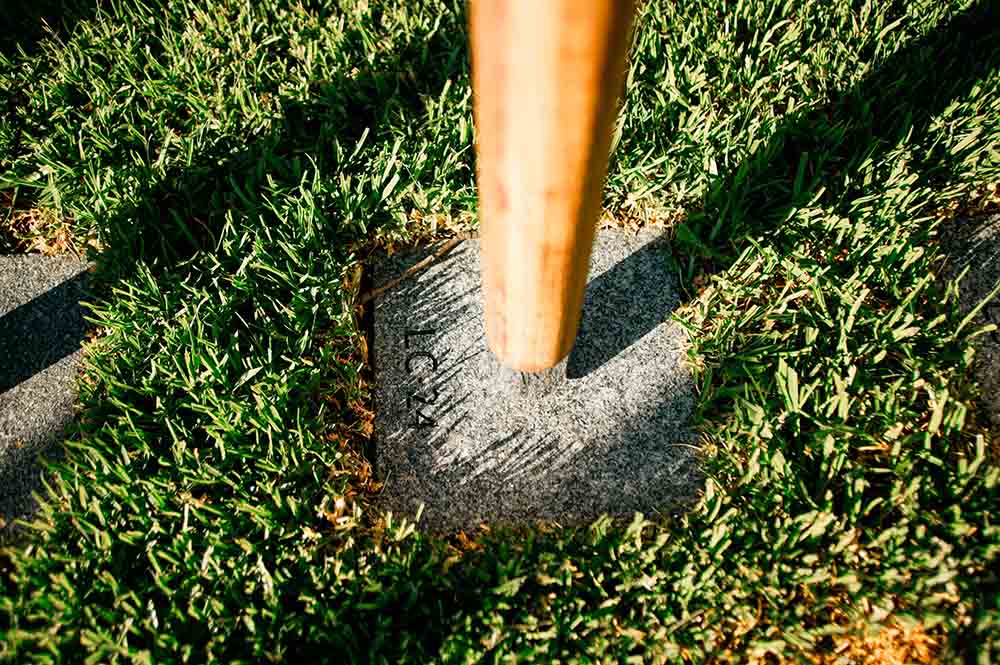Cape Town Labour Corps Memorial
- Country South Africa
- Total identified casualties 1772 Find these casualties
- Region Western Cape
- Identified casualties from First World War
- GPS Coordinates Latitude: -33.92806, Longitude: 18.41561
Explore our new memorial with a fascinating virtual tour via the free For Evermore app available on IOS and Android. You can learn about this new memorial and discover the stories of those commemorated on it. If visiting in person, use the free audio guide to explore the memorial.
Download FREE app for iOS Download FREE app for Android
Location information
The Cape Town Labour Corps Memorial is located within the Delville Wood Memorial Garden within the Company’s Garden.
The garden can be accessed from each side, via Avenue Street, Queen Victoria Street, Wale Street, Orange Street and Gallery Lane. The memorial is in the south-western corner of the garden.
Visiting information
The Company's Garden is open daily in the summer from 07h00 to 20h30 and in winter from 07h00 to 19h00. Entry is free.
History information
The Cape Town Labour Corps Memorial was created by the Commonwealth War Graves Commission as a memorial to those casualties who served in all South African Military Labour Regiments and who died on the continent of Africa, or at sea in the South Atlantic or Indian Oceans between 3 August 1914 and 31 August 1921, and who have no known grave.
Opening in 2025, it honours more than 1,700 South Africans who served in non-combat roles and perished with no known grave, or commemoration. This is the first memorial to be delivered by CWGC’s Non-Commemoration Programme, a multinational programme that addresses previous inequalities in commemoration.
Thousands of South Africans served in non-combat roles supporting British and imperial forces, as the sides fought for former colonial territories across the continent of Africa. Recruited in Cape Town, Pietermaritzburg, Kimberley, Pretoria, Upington and Johannesburg, South African military labourers carried food and ammunition, managed logistics, maintained roads and railways, and built defences, to keep the East African campaign supplied. Although there were many volunteers, others were pressured into service, with local authorities leaning on magistrates and chiefs to raise the strongest men in villages and towns. Conditions were harsh. Many died far from home, largely from illnesses like malaria, dysentery, pneumonia and tuberculosis, but it was also dangerous toil that saw accidents and injuries.
Their comrades who died in the European theatre of operations and who have no known grave including men of the South African Native Labour Corps who died when their transport ship – the SS Mendi – sank off the Isle of Wight, UK, are named on the Hollybrook Memorial, Southampton in the United Kingdom.
The Cape Town Labour Corps Memorial’s landmark design was achieved by a South African national architectural design competition, endorsed by the Cape Institute for Architecture. The winner, Dean Jay architects, has created an original immersive design using African Iroko hardwood and South African Rustenburg granite bases. The concept has been brought to life by talented South African crafts people and specialists.
Each of those South African Labour Corps casualties who has no known grave is individually commemorated by name on one of the symbolic Iroko timber posts. These are arranged in Zones and Avenues, each post having a unique number and bearing the service details of one casualty.
At the centre of the Memorial is a stone podium bearing a ground level dedicatory text in Xhosa, Afrikaans and English.
The Memorial is divided into five Zones, each representing a year of the war. Casualties are commemorated by numbered posts arranged in Avenues A to X on the lower tier and A to J on the upper tier. The Zone, Avenue, and Post are listed in the register (e.g., 1.LU.51 means Zone 1, Lower tier Avenue U, Post 51) and inscribed at the base of each post.
The names of all those commemorated are listed alphabetically in the Memorial Register together with their Post reference so that visitors may find the commemoration they are looking for.
The Memorial Register may be found at the Iziko South African Museum, 23A Queen Victoria Street, Cape Town, 8001 also situated in the Company’s Garden. Open between 09h00 and 17h00 Monday to Sunday and Winter Weekend hours of 08h30 to 16h00.
A copy will also be held at St George’s Cathedral, Cape Town.








